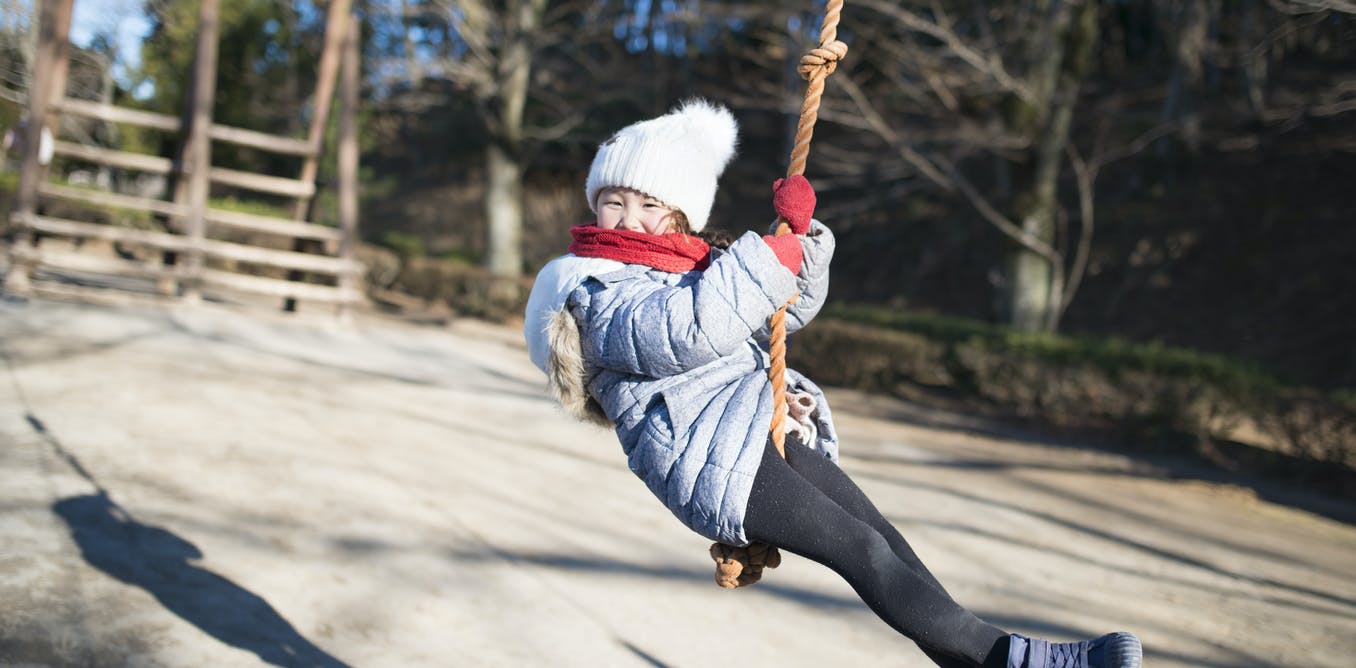If in doubt, let them out — children have the right to play

A 2019 UNICEF Canada report shows that only 21 per cent of children aged five to 11 engage in at least 1.5 hours a day of active play and unstructured activities. (Shutterstock)
New research from Statistics Canada’s Canadian Health Measures Survey reaffirmed the dramatic decline in Canadian children’s fitness seen over the past 35 years — with only one-third of Canadian school-aged children meeting physical activity guidelines.
Other research from the same survey showed that physical activity increases when children are outdoors. Each additional hour spent outdoors per day is associated with seven more minutes of moderate-to-vigorous physical activity, 762 more steps and 13 fewer minutes of sedentary time. Canadian children need to get outside to play more, to help them move more — and it is their right.
In late November, the United Nations Convention on the Rights of the Child marked its 30th anniversary. This document enshrines a child’s right to play, saying that:
“States Parties recognize the right of the child to rest and leisure, to engage in play and recreational activities appropriate to the age of the child … and shall encourage the provision of appropriate and equal opportunities for cultural, artistic, recreational and leisure activity.”
The convention also commits states “to develop preventive health care” and “guidance for parents” which can include the health benefits of active play.
Canada is failing to honour these commitments. The 2018 ParticipACTION Report Card on the Physical Activity of Children and Youth
gives Canada a “D” grade for “Active Play and Leisure Activities,” while the 2019 UNICEF Canada Baseline Report for the Canadian Index of Child and Youth Well-being shows that only 21 per cent of children aged five to 11 engage in at least 1.5 hours a day of active play and unstructured activities. The recent Statistics Canada research reaffirms these findings.
Adult fears restrict play
Playing outdoors is better than indoors, but the availability of digital media coupled with fears concerning stranger danger and play injury, among others, have shifted children indoors.
A recent position statement on active outdoor play, endorsed by the Canadian Council of Chief Medical Officers of Health, concluded:
“Access to active play in nature and outdoors — with its risks — is essential for healthy child development. We recommend increasing children’s opportunities for self-directed play outdoors in all settings — at home, at school, in child care, the community and nature.”
In an era of schoolyard ball bans and debates about safe tobogganing, have we as a society lost the appropriate balance between keeping children healthy and active and protecting them from serious harm? Have we restricted a child’s right to play and their access to the holistic health benefits of active outdoor play?
Adults’ fears about all that can go wrong when children play is a barrier to letting children play outside. In the case of schools and other institutions, these fears can result in unnecessary and restrictive policies that limit the amount and type of play available to children.
One in 14 million risk of abduction
Yet the injury statistics show that children today are safer than at any other time in Canada. Car crashes are the leading causes of child death, yet we do not hesitate to put our children in cars to “keep them safe.”

Children’s outdoor play supports a myriad of health and developmental outcomes.
(Shutterstock)
The risk of abduction by a stranger is so remote that statistics are not regularly released by police agencies. Public Safety Canada estimated the risk at one in 14 million more than 15 years ago.
The likelihood of a child dying from a fall from play equipment or a tree is even lower at one in 70 million, and there are no recorded deaths for children falling from trees in the 17 years of available statistics. Serious injuries are also extremely rare; the likelihood of sustaining a fracture while playing is 0.0004 per cent.
A duty to provide active outdoor play
There are also unique benefits of being in the outdoors, particularly in nature. When children play the way they want outdoors they move more, sit less and play longer.
They get their hands dirty and are exposed to microbes that help them build immunity. They make their own goals and figure out the steps to attain those goals. They learn, build resilience, develop social skills and learn how to manage risks and keep safe. Their eyes get the exercise needed to combat short-sightedness.
The research is clear: children’s outdoor play supports a myriad of health and developmental outcomes. Despite these benefits and the remoteness of adverse events we restrict our children’s right to play outside.
As 2019, the year of the 30th anniversary of the Convention on the Rights of the Child soon comes to a close, we are reminded of our duty to provide, encourage and facilitate active outdoor play for our children’s healthy development.
If in doubt, let them out — it’s their right.
[ Expertise in your inbox. Sign up for The Conversation’s newsletter and get a digest of academic takes on today’s news, every day. ]

Mark S. Tremblay receives funding from the Canadian Institutes of Health Research, the Heart and Stroke Foundation of Canada, The Lawson Foundation, the Public Health Agency of Canada, ParticipACTION and salary support form the Children's Hospital of Eastern Ontario Research Institute. He is President of the Active Healthy Kids Global Alliance, Chair of Outdoor Play Canada, Chief Scientific Officer of the ParticipACTION and was primary author of the Position Statement on Active Outdoor Play.
Mariana Brussoni receives funding from the Canadian Institutes of Health Research, the Lawson Foundation and salary support from the BC Children's Hospital Research Institute. She is a board member of the Child & Nature Alliance of Canada and on the leadership group for Outdoor Play Canada.







